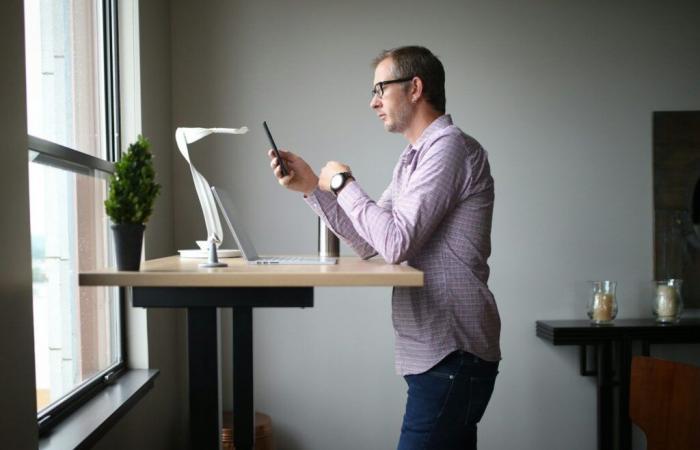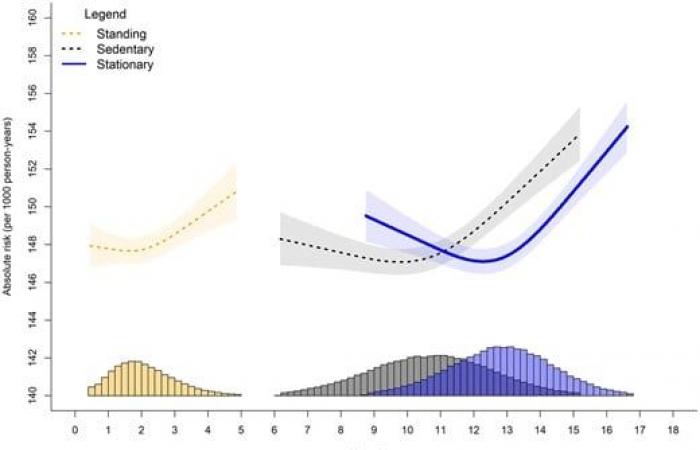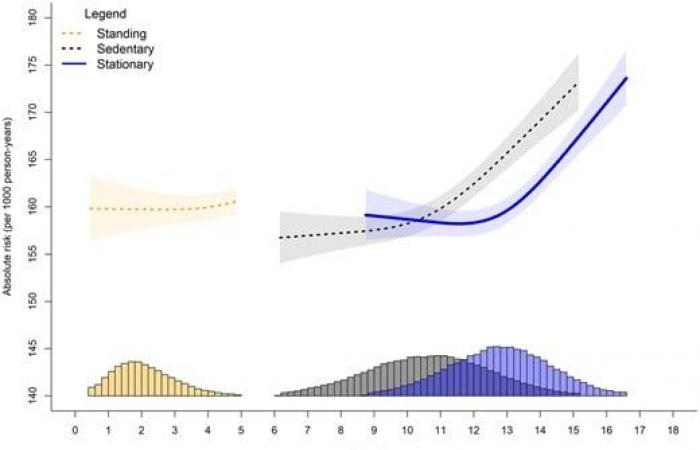The Cupertino company, which has made sit-stand desks standard equipment at its Apple Park campus, has long advocated the virtues of working while standing. Tim Cook, its CEO, did not hesitate to describe the sitting position as “ new cancer » in 2018, a statement that necessarily sparked controversy. If a sedentary lifestyle is, in fact, a known risk factor, the simplification was perhaps a bit excessive. But what is it really? the benefits of these modular workstations ?
A new study from the University of Oxford, published October 16 in the journal International Journal of Epidemiologybrings new light to evaluate whether or not these sit-stand desks are useful or not.
Sedentary lifestyle under close surveillance
Researchers followed more than 83,000 people for approximately seven yearsequipped with accelerometers on the wrist for at least four days. These devices made it possible to accurately measure their periods of sitting, standing, walking or running during their waking hours.
The results are edifying : beyond 12 hours daily in a static position (sitting or standing), each additional hour increases the risk of developing orthostatic circulatory diseases (hypotension) by 22% and by 13% for cardiovascular diseases.
The risk of circulatory diseases increases significantly after 12 hours spent immobile, whether sitting or standing. However, standing poses a slightly lower risk than sitting. © International Journal of Epidemiology, Volume 53, Issue 6, December 2024


Beyond 12 hours of daily immobility (sitting or standing), the risk of cardiovascular disease increases significantly. © International Journal of Epidemiology, Volume 53, Issue 6, December 2024
Standing position: a demonstrated cardiovascular benefit
The study, however, reveals quite important nuances depending on the postures adopted. After 10 hours of sitting, each additional hour increases the risk of orthostatic circulatory disease by 26% and that of cardiovascular disease by 15%. On the other hand, the standing position, although presenting orthostatic circulatory risks after two hours (+11% every 30 minutes), showed no tangible impact on cardiovascular diseases.
The conclusion is therefore self-evident: if movement remains the best option for health, alternating between a sitting and standing position appears to be a relevant solution for long office days. This study thus proves Apple and its equipment policy right, demonstrating that the adoption of modular offices responds to a real public health issuebeyond a simple fashion effect.
- An Oxford study shows that beyond 12 hours of sitting still per day, the risk of circulatory and cardiovascular diseases increases.
- Standing reduces cardiovascular risks compared to sitting, but remains less beneficial than movement.
- Alternating sitting and standing at the office, as Apple advocates, is an effective solution to limit the impacts of a sedentary lifestyle.


By : Keleops AG









